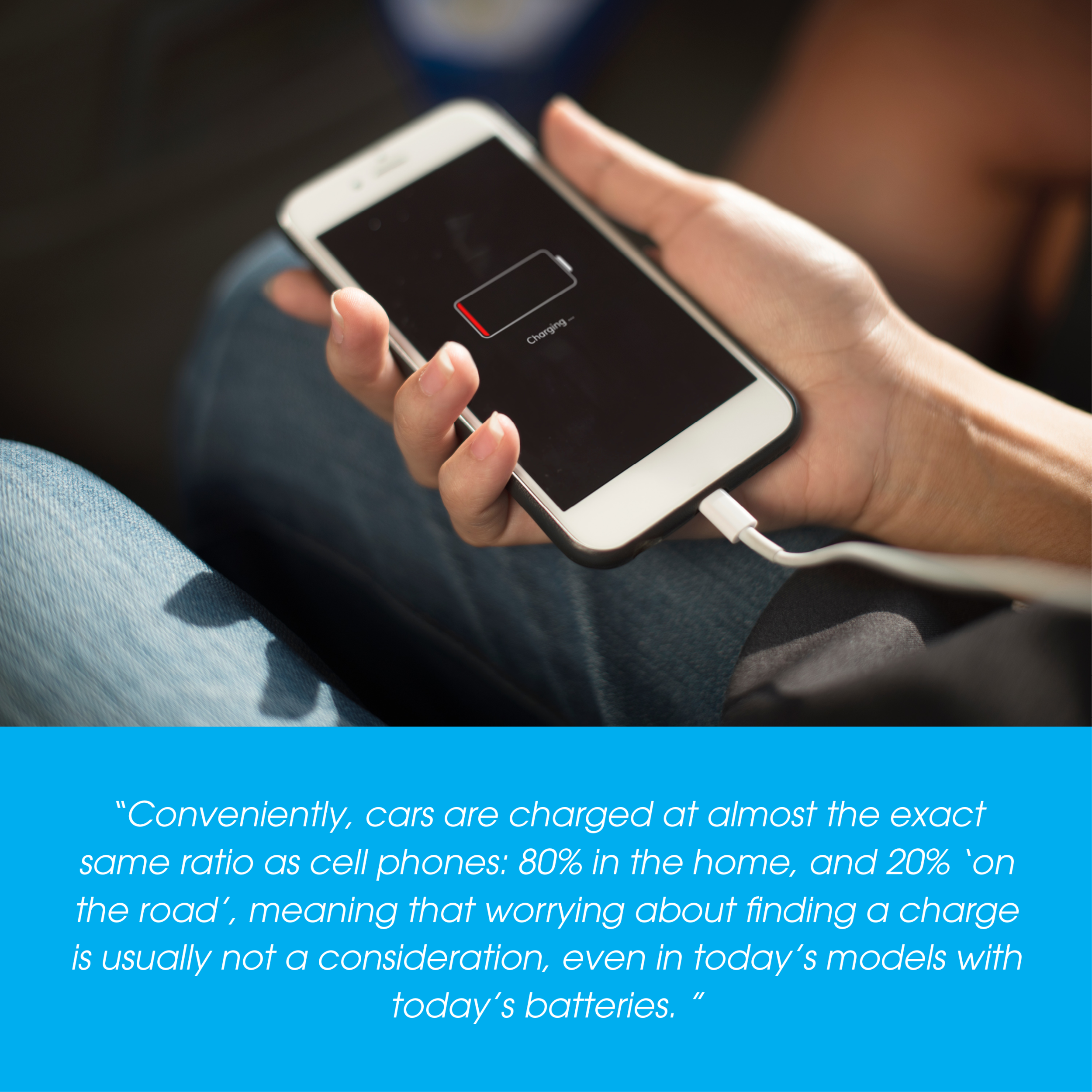Driving the Present: Electric Vehicles Today
The future of cars is electric. This phrase is familiar to most people. We’ve heard that, eventually, electric vehicles (EV’s) will be able to go as far as we’re used to going, charge as fast as we’re used to refueling, provide the space/cargo/hauling capacity we’re used to, and, best of all, they'll be as affordable as our current fuel-burning models. What’s interesting about this vision of the future is the fact that it is already a common reality.
Today’s electric cars and plug-in hybrids are already efficient, practical, and relevant. With over 60 models available in the US alone, and rapidly growing consumer options, including the Ford F-150, which opens up a whole new realm of possibility for the truck enthusiasts reading this article, it is clear that the value proposition of owning an EV not only grows every year, but makes very real sense in the here and now.
In an age where many subjects are divisive, EV’s are pretty unifying. The logical and emotional reasons for continued acceleration of EV adoption are simply too motivating for US households to ignore.
From a consumer perspective, most buying decisions are made on quality and price, adding up to a perceived ‘value’. This value is not only important at the time of purchase, but throughout the lifespan of ownership. Things like long-term safety and durability matter; it’s why we have building codes. The cool thing about EV’s is that they offer value, safety, and durability based on technology, engineering, and inherent features, not on codes or regulations.
So where do EVs get their value and what makes them relevant right now as a viable product in American households? There are several interesting facts most people don’t know about EV’s that might just convince you the old adage “the future is now” is actually true.
AS THEY STAND TODAY
EV’s have 90 - 99% FEWER moving parts of an Internal Combustion Engine, allowing for near-infinite warranty opportunities, especially when paired with the data showing batteries are lasting far longer than manufacturers anticipated.
They offer households the ability to save over $1,000 per year on driving costs alone, not including maintenance savings. Electricity prices are far more stable than gas prices, meaning more predictable monthly bills.
They charge at a similar rate to the American’s average coffee trip, achieving an 80% fast-charge in the same 22 minutes that people spending picking up their morning coffee. Grab your latte while you’re refueling.
With a range of between 200-300 miles, chances are that a bathroom or food stop will be required prior to a refueling stop. And that is key to the EV’s new relevance in a big way. Refueling during reststops is already a common practice. Owning an EV doesn’t change anything about your road trip.
They have better low-end torque for towing and acceleration.
They are far more energy efficient due to the inherent nature of their power source. According to FuelEconomy.gov, “EV’s convert about 59%–62% of the electrical energy from the grid to power at the wheels. Conventional gasoline vehicles only convert about 17%–21% of the energy stored in gasoline to power at the wheels.”
Homeowners with a solar PV system who also own an EV have nearly cost-free fuel over the long-term life of their solar system. Consider the prospect of lowering your electricity bill while simultaneously eliminating your car’s fuel costs. It’s a game changer.
EV’s have a fast-expanding charging network. Charging stations are available across the country at an incredible number of convenient retail, residential, and municipal locations. Optimus Solar alone averages two installed stations per month in Central Florida.
And conveniently, cars are charged at almost the exact same ratio as cell phones: 80% in the home, and 20% ‘on the road’, meaning that worrying about finding a charge is usually not a consideration, even in today’s models with today’s batteries.
They provide a near-silent ride, making family time, conversation, and conference calls far superior in an EV.
Finally, EV’s are inherently safer than traditional internal combustion engine cars. Their lower center of gravity (due to the battery placement) means less rollovers. Regenerative braking features on EVs are more effective. They also lack a combustible fuel and harmful exhaust.
AN ELECTRIC PRESENT
EV’s have come a long way. They go faster, last longer, and are as cost effective as traditional fuel-burning vehicles. In the long run, and as renewable energy sources begin to take up a more prominent piece of the energy pie, more EV’s will mean cleaner air in cities around the world. Their benefits speak for themselves. Whether you are motivated by the environment, energy independence, household finances, or even a desire to contribute to improved international relations through the avoidance of fuel imports, owning an EV makes sense and will soon be an inevitability.
When you consider the virtuous cycle of installing solar panels on your home or business and driving an EV that is fueled by the power you produce, they simply cannot be ignored. EV’s will continue improving, and as they do, infrastructure and social structures will change along with them. Instead of filling at the gas station once a week, we’ll be charging at home while we sleep and while at the grocery store. It’s a new normal that many people have already embraced.
The future really is now. It’s cleaner, faster, more reliable, and it’s electric.



